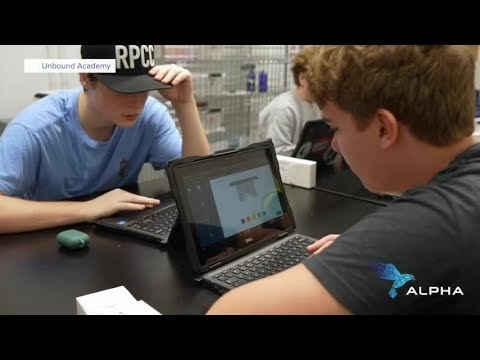On the face of it, saying that if we stopped teaching we would not need examinations sounds crazy.
But it is not so hard to think of examples of rigorous assessment that do not entail examinations in the sense of written responses to a set of predetermined questions.
For example, institutions regularly award PhDs to candidates who successfully demonstrate their grasp of a subject and associated skills, without requiring them to sit a written examination paper. The difference of course is that PhD students are not taught a fixed syllabus.
The point of a PhD thesis is to demonstrate a unique contribution to knowledge of some kind. And as it is unique then it is not possible to set examination questions in advance to test it.
What are we trying to assess?
If written examinations are inappropriate for PhDs, then why are they the default mode of assessment for undergraduate and taught postgraduate students? The clue, of course, is in the word “taught”. If the primary intended learning outcomes of a course of study require all students to acquire the same body of knowledge and skills, as taught in the course, to the same level, then written examinations are a logical and efficient institutional response.
But surely what we want as students, teachers, employers, professional bodies and funding bodies is graduates who are not just able to reproduce old knowledge and select solutions to a problem from a repertoire of previously learned responses? So why does so much undergraduate and postgraduate education emphasise teaching examinable knowledge and skills rather than developing more autonomous learners capable of constructing their own knowledge?
It is not true that learners lack the motivation and ability to be autodidacts – the evidence of my young grandchildren acquiring complex cognitive skills (spoken language) and of motor abilities (walking and running) suggests we have all done it in the past. And the comprehensive knowledge of team players and team histories exhibited by football fans, and the ease and confidence with which some teenagers can strip down and reassemble a motorcycle engine suggest that autodidacticism is not confined to our early years.
An example from design
Is it feasible, practical or economic to run courses that offer undergraduates an educational framework within which to pursue and develop personal learning goals, akin to a PhD, but at a less advanced level? In this case, my own experience suggests we can. I studied at undergraduate level for four years, at the end of which I was awarded an honours degree. During the entire four years there were no written examinations.
I was just one of many art and design students following programmes of study regulated and approved at a national level in the UK by the Council for National Academic Awards (CNAA).
According to the QAA Art and Design subject benchmark statement:
Learning in art and design stimulates the development of an enquiring, analytical and creative approach, and develops entrepreneurial capabilities. It also encourages the acquisition of independent judgement and critical self-awareness. Commencing with the acquisition of an understanding of underlying principles and appropriate knowledge and skills, students normally pursue a course of staged development progressing to increasingly independent learning.
Of course some of the “appropriate knowledge and skills” referred to are subject specific, for example sewing techniques, material properties and history of fashion for creating fashion designs; properties of materials, industrial design history and machining techniques for product design; digital image production and historic stylistic trends in illustration and advertising for graphic design, and so on.
Each subject has its own set of techniques and knowledge, but a lot of what students learn is determined by lines of enquiry selected by students themselves in response to design briefs set by course tutors. To be successful in their study they must learn to operate with a high degree of independence and self-direction, in many ways similar to PhD students.
Lessons without teaching
This high degree of independence and self-direction as learners has traditionally been fostered through an approach that differs crucially from the way most other undergraduate courses are taught.
Art and design courses are organised around a series of questions or provocations called design briefs that must be answered, rather than around a series of answers or topics that must be learned. The learning that takes place is a consequence of activities undertaken by students to answer the design brief. Answers to briefs generated by art and design students still have to be assessed of course, but because the formal taught components (machining techniques, material properties, design history, etc.) are only incidental to the core intended learning outcomes (creativity, exploration, problem solving) then written examinations on these topics would be only marginally relevant.
What is more important on these courses is what students have learned rather than what they have been taught, and a lot of what they have learned has been self-taught, albeit through carefully contrived learning activities and responsive guidance from tutors to scaffold the learning. Art and design students learn how to present their work for assessment through presentation of the designed artefact (ie. “the answer”), supported by verbal, written and illustrated explanations of the rationale for the final design and the development process that produced it, often shared with their peers in a discussion known as a “crit” (critique). Unlike written examinations, this assessment process is an authentic model of how students’ work will be judged in their future professional practice. It thus helps to develop important workplace skills.
Could it work for other subjects?
The approach to art and design education described here has been employed globally since the mid-twentieth century. However, aspects of the approach are evident in other subject domains, variously called “problem based learning”, “project based learning” and “guided discovery learning”. It has been successfully deployed in medical education but also in veterinary sciences, engineering, nursing , mathematics, geography and others. So why are traditional examinations still the de facto approach to assessment across most higher education disciplines and institutions?
One significant barrier to adoption is the high cost of studio-based teaching at a time when institutions are under pressure to increase numbers while reducing costs. The diversity of enquiries initiated by art and design students responding to the same design brief requires high levels of personalised learning support, varied resources and diversity of staff expertise.
Is now the time?
As with other subjects, art and design education has been under attack from the combined forces of politics and market economics . In the face of such trends it might be considered naive to suggest that such an approach should be adopted more widely rather than less. But although these pressures to reduce costs and increase conformity will likely continue and accelerate in the future, there is another significant force at play now in the form of generative AI tools.
These have the ability to write essays, but they can also suggest template ideas, solve maths problems, and generate original images from a text prompt, all in a matter of seconds. It is possible now to enter an examination question into one of several widely available online generative AIs and to receive a rapid response that is detailed, knowledgeable and plausible (if not always entirely accurate). If anyone is in any doubt about the ability of the current generation of AIs to generate successful examination question answers then the record of examinations passed by ChatGPT will be sobering reading.
It is possible that a shift from asking questions, (answers to which the questioner already knows), to presenting learners with authentic problems that assess ability to present, explain, and justify their responses – is a way through the concerns that AI generated responses to other assessment forms present.






